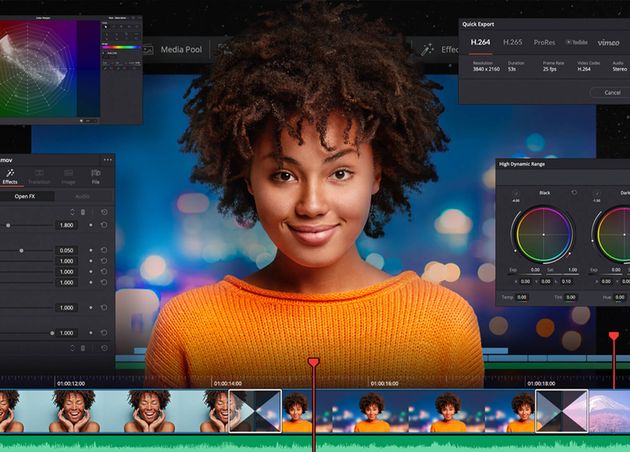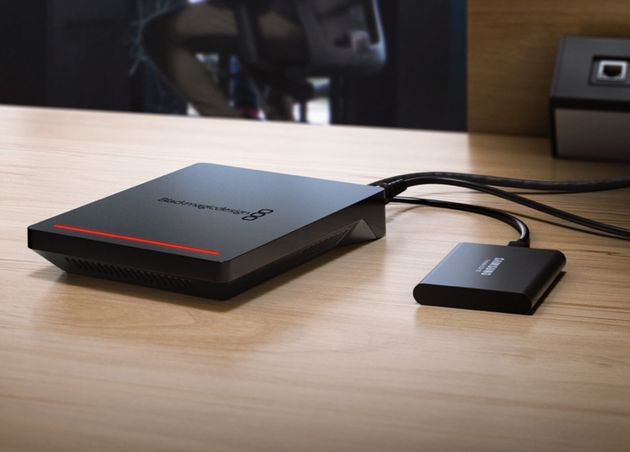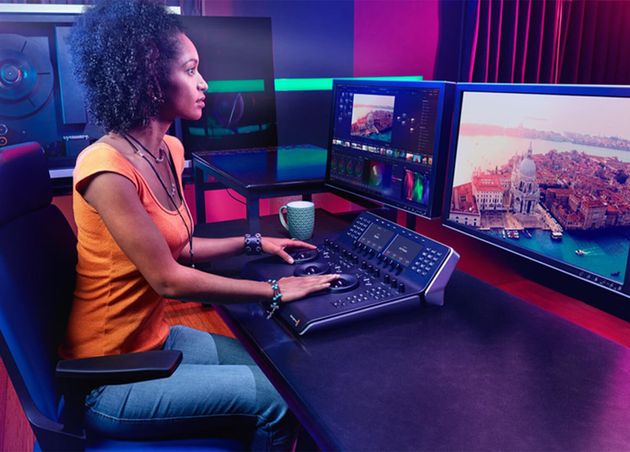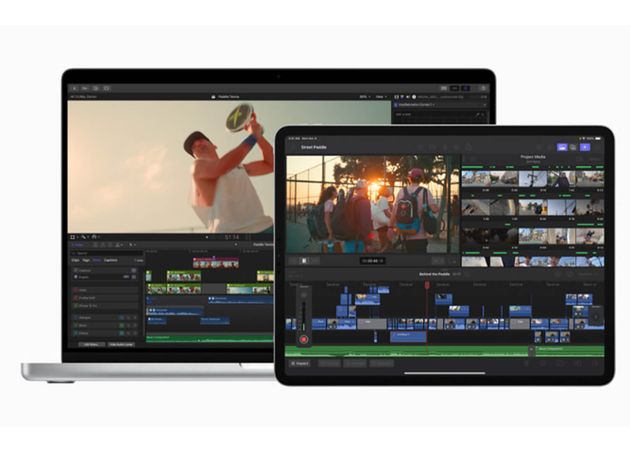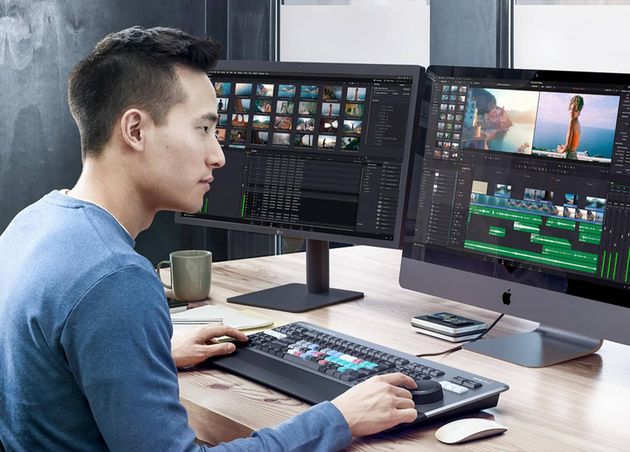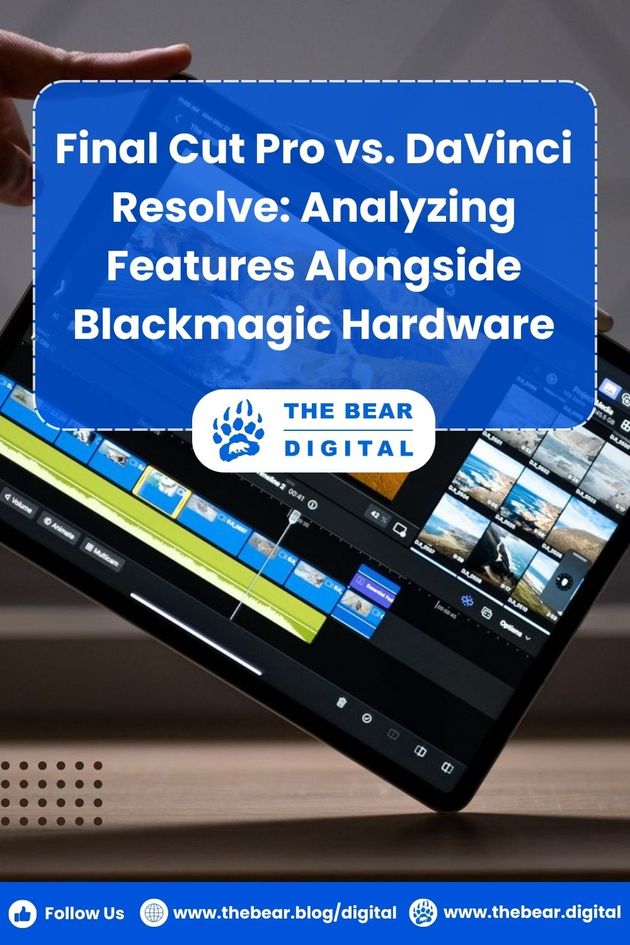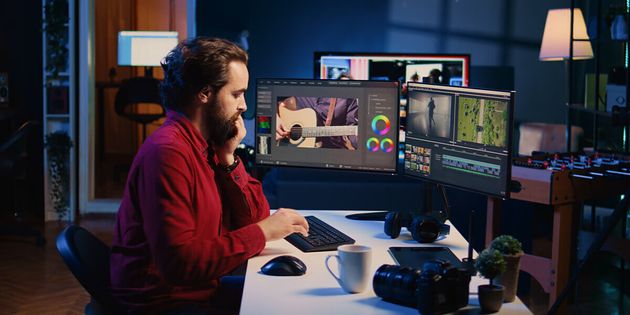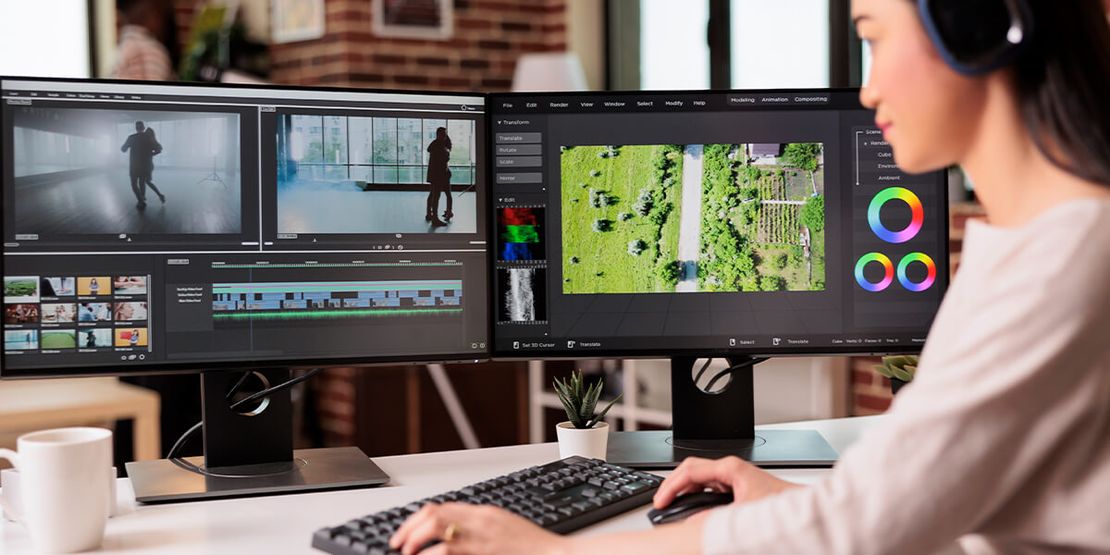
Final Cut Pro vs. DaVinci Resolve: Analyzing Features Alongside Blackmagic Hardware
The digital video production space has been revolutionized with sophisticated hardware and software designed to improve the editing and post-production processes.
Two brands at the forefront of this revolution are DaVinci Resolve by Blackmagic Design and Final Cut Pro by Apple. Both platforms offer high-quality, professional-grade video editing capabilities. However, when DaVinci Resolve is used with Blackmagic Design hardware, it offers certain advantages over Final Cut Pro.
To fully appreciate the synergistic benefits of combining DaVinci Resolve with Blackmagic Design hardware, we must first understand what each component brings.
💻 Tech Fact!
Thomas Alva Edison and William Laurie Dickson made the first motion picture projector in 1890.
DaVinci Resolve: A Journey Through Video Editing Marvels
DaVinci Resolve, developed by Blackmagic Design, is a staple among video editors. Recognized for its non-linear editing capabilities, it is a versatile solution for post-production tasks such as color correction, graphics, editing, and visual effects. As an all-in-one platform, DaVinci Resolve empowers users to seamlessly integrate audio and video sources within the program, facilitating efficient editing, adjustment, and transformation. Widely adopted across the industry, it finds extensive use in filmmaking, advertising, and various media productions, offering a professional-grade solution accessible to all skill levels.
A standout feature of DaVinci Resolve is its precision-focused color grading panels, prized for their role in film and television production. It can handle high-resolution formats up to 8K and ensures superior visual quality in projects of any scale. Furthermore, DaVinci Resolve streamlines the editing process by eliminating the need for multiple software downloads, allowing users to edit video and audio seamlessly within the same interface. With various effects, styles, and animations, DaVinci Resolve provides a comprehensive toolkit for enhancing creativity and efficiency in video editing tasks.
Diving Deeper: Unraveling the Blackmagic Design Hardware Universe
Blackmagic Design is a prominent company renowned for its comprehensive range of both software and high-quality hardware solutions. Complementing their software offerings, Blackmagic Design produces an array of essential tools for video production, including cameras, video monitoring tools, converters, capture cards, live production switchers, routers, waveform monitors, scanners, and more.
Among their flagship products are the Cinema Cameras, celebrated for their remarkable ability to capture high-resolution footage in various formats. Notably, these cameras seamlessly integrate with DaVinci Resolve, providing users unparalleled compatibility and efficiency in their editing workflows.
Additionally, Blackmagic Design offers the Ultra Studio and DeckLink series, widely embraced in the industry. These video capture and playback devices cater to professional video editing, live production, and other video workflows, boasting impressive data throughput capabilities essential for handling the hefty file sizes associated with high-resolution footage formats such as 4K, 6K, and 8K.
The Perfect Duo: DaVinci Resolve + Blackmagic Design Hardware
Decoding Final Cut Pro: Apple's Magnum Opus
Final Cut Pro, developed by Apple, is a premier video editing software tailored for professionals seeking top-tier video production. Designed exclusively for MacOS, Final Cut Pro seamlessly integrates with other Apple software, offering a cohesive editing environment. Notably, it features a Magnetic timeline that automatically connects clips, alleviating synchronization challenges commonly encountered in editing workflows.
Beyond its intuitive interface, Final Cut Pro boasts many advanced features. It supports multi-camera editing and offers automatic clip filtering based on metadata and keywords, streamlining the organization process. Users can effortlessly group related clips and access various title and animation options to enhance their projects.
Moreover, Final Cut Pro delivers professional-grade effects with precise color correction and seamless transitions, ensuring a polished final product. It also supports editing 360-degree videos, immersing viewers in a realistic experience. Additionally, the software excels in audio editing, allowing users to mix and edit audio from various sources seamlessly. With its comprehensive features and support for multiple video formats, Final Cut Pro remains a cornerstone of professional video editing.
💻 Tech Trivia!
Conrad A. Nervig won the first Oscar for excellence in film editing for his work on the movie "Eskimo."
The Showdown: DaVinci Resolve vs. Final Cut Pro
Hardware Options
Final Cut Pro, Apple's renowned professional film editing software, boasts a rich history and many sought-after features, including advanced color grading capabilities, multi-cam editing, and the innovative magnetic timeline.
However, Final Cut Pro is exclusively compatible with Apple devices and MacOS, limiting its accessibility to users outside the Apple ecosystem. Unlike DaVinci Resolve and Blackmagic hardware, Final Cut Pro lacks a robust hardware product ecosystem to bolster its performance, potentially leading to compatibility issues and performance disparities.
Consequently, Final Cut Pro users may encounter challenges in certain workflows requiring third-party hardware, disrupting the seamless integration enjoyed by DaVinci Resolve and Blackmagic hardware users. This disparity in integration levels could result in performance issues or compatibility concerns for Final Cut Pro users.
Price
DaVinci Resolve and Final Cut Pro are priced similarly, with Final Cut Pro available for $299.99 and DaVinci Resolve priced at $295.00. However, DaVinci Resolve offers a free version with many essential features, making it accessible to a broader audience. Users only need to upgrade to access more advanced features, providing a cost-effective option for those with varying editing needs.
User-Friendly Interface
Performance
In terms of performance, Final Cut Pro holds an edge over DaVinci Resolve, which is renowned for its speed and efficiency. Leveraging Apple's reputation for high-speed software, Final Cut Pro excels in everyday video editing tasks, offering swift and seamless performance. In contrast, DaVinci Resolve may experience sluggishness, especially when handling extensive editing tasks or adding numerous clips to projects. However, higher-end GPUs can improve performance, which help DaVinci Resolve run more smoothly.
Apple optimizes Final Cut Pro for specific devices to ensure smooth video playback, with the M1 and M2 chips proving particularly compatible. Even Intel-based Macs offer robust performance with Final Cut Pro, highlighting Apple's commitment to delivering exceptional editing experiences across its hardware lineup.
Color Grading
With color grading, DaVinci Resolve emerges as the clear winner, offering a more comprehensive suite of HD color grading options and beauty enhancement features. Its tracker functionality is particularly impressive, allowing for precise color adjustments with remarkable accuracy. DaVinci Resolve's power windows further enhance its efficiency in color grading tasks, ensuring seamless editing workflows.
On the other hand, Final Cut Pro provides more basic coloring options compared to DaVinci Resolve. While it offers color wheels and some color hues, Final Cut Pro lacks the extensive features found in DaVinci Resolve, making it less versatile for advanced color grading tasks.
Collaboration
Regarding collaboration with other software and tools, DaVinci Resolve takes the lead, offering robust integration capabilities. Its seamless compatibility with various software and tools enhances collaborative workflows, allowing users to exchange project files and assets seamlessly. In contrast, Final Cut Pro lags in this aspect, lacking the same level of integration with external tools and software, which may hinder collaborative efforts among users.
Supported Formats
Final Cut Pro and DaVinci Resolve boast support for a wider range of video formats, ensuring seamless compatibility with most standard formats across the industry. While both editors handle most formats seamlessly, Final Cut Pro falls short in supporting certain RAW formats. Notably, RED Raw, a popular format among filmmakers, requires additional plugins for compatibility with Final Cut Pro, whereas DaVinci Resolve offers native support for this format, enhancing its versatility in handling diverse media files.
Compatibility
Support System
Both DaVinci Resolve and Final Cut Pro offer robust support systems and comprehensive tutorials to aid users in mastering the software. With a wealth of video tutorials available, both platforms provide ample resources for users to enhance their editing skills and navigate the intricacies of the software effectively. Whether users are beginners or experienced professionals, these support systems are valuable tools for learning and troubleshooting within DaVinci Resolve and Final Cut Pro.
Choosing Your Editing Companion
When selecting the ideal video editor, it's crucial to consider your specific requirements. DaVinci Resolve emerges as a strong choice, particularly for those seeking a free option to start their editing journey. However, both DaVinci Resolve and Final Cut Pro offer unique advantages and drawbacks, catering to diverse user needs and budgets. The option to utilize both editors is available for Apple users, but Windows users must opt for DaVinci Resolve due to Final Cut Pro's exclusive compatibility with macOS.
In summary, while Final Cut Pro and DaVinci Resolve are formidable tools capable of handling professional editing tasks, integrating DaVinci Resolve with Blackmagic Design hardware provides unmatched integration, consistency, and collaborative capabilities. Nonetheless, the ultimate decision rests on each user or team's specific needs, workflows, and preferences.
Tech Bear


